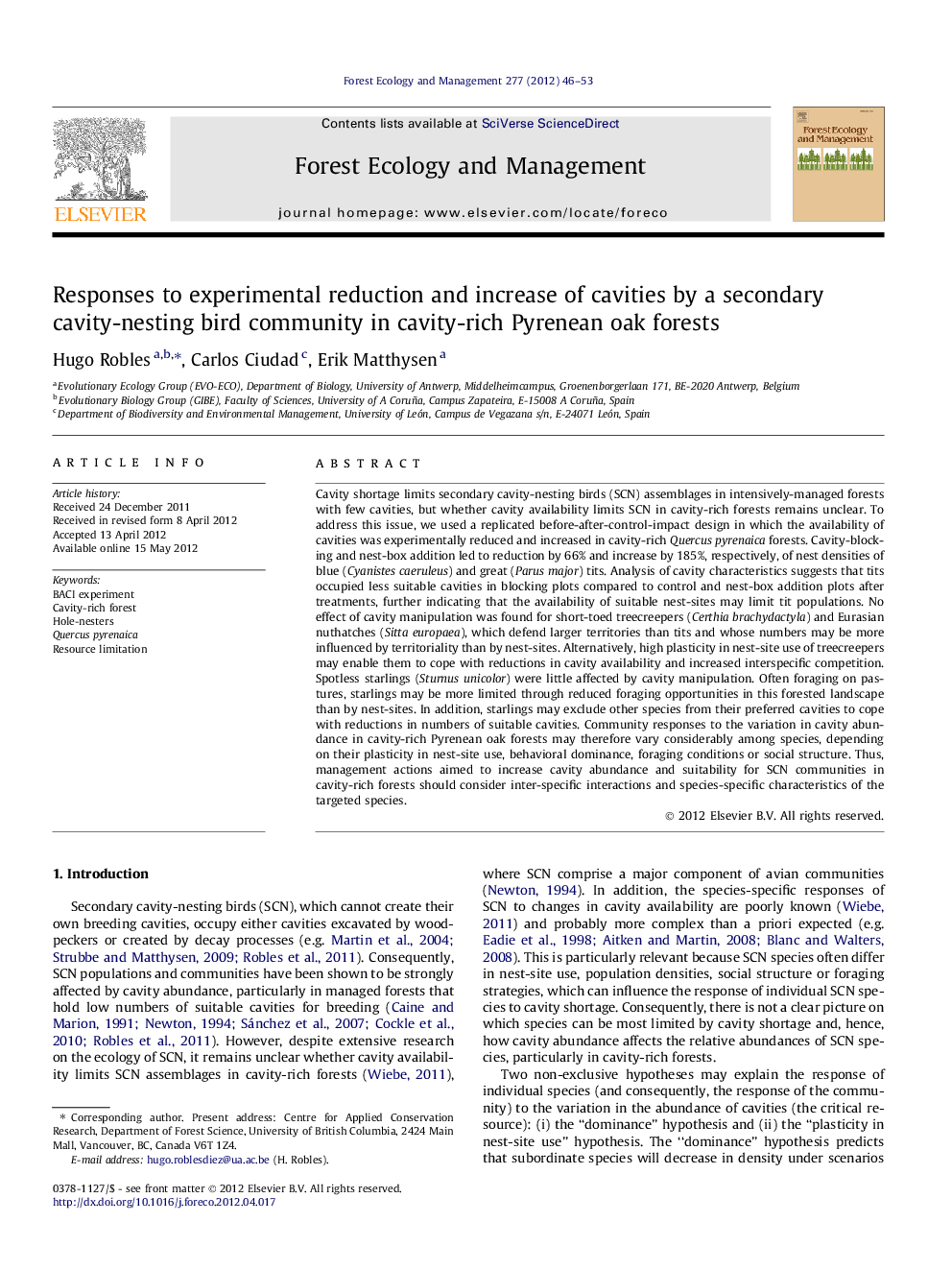| کد مقاله | کد نشریه | سال انتشار | مقاله انگلیسی | نسخه تمام متن |
|---|---|---|---|---|
| 87216 | 159239 | 2012 | 8 صفحه PDF | دانلود رایگان |

Cavity shortage limits secondary cavity-nesting birds (SCN) assemblages in intensively-managed forests with few cavities, but whether cavity availability limits SCN in cavity-rich forests remains unclear. To address this issue, we used a replicated before-after-control-impact design in which the availability of cavities was experimentally reduced and increased in cavity-rich Quercus pyrenaica forests. Cavity-blocking and nest-box addition led to reduction by 66% and increase by 185%, respectively, of nest densities of blue (Cyanistes caeruleus) and great (Parus major) tits. Analysis of cavity characteristics suggests that tits occupied less suitable cavities in blocking plots compared to control and nest-box addition plots after treatments, further indicating that the availability of suitable nest-sites may limit tit populations. No effect of cavity manipulation was found for short-toed treecreepers (Certhia brachydactyla) and Eurasian nuthatches (Sitta europaea), which defend larger territories than tits and whose numbers may be more influenced by territoriality than by nest-sites. Alternatively, high plasticity in nest-site use of treecreepers may enable them to cope with reductions in cavity availability and increased interspecific competition. Spotless starlings (Sturnus unicolor) were little affected by cavity manipulation. Often foraging on pastures, starlings may be more limited through reduced foraging opportunities in this forested landscape than by nest-sites. In addition, starlings may exclude other species from their preferred cavities to cope with reductions in numbers of suitable cavities. Community responses to the variation in cavity abundance in cavity-rich Pyrenean oak forests may therefore vary considerably among species, depending on their plasticity in nest-site use, behavioral dominance, foraging conditions or social structure. Thus, management actions aimed to increase cavity abundance and suitability for SCN communities in cavity-rich forests should consider inter-specific interactions and species-specific characteristics of the targeted species.
► We examined the responses of cavity-nesting birds to variation in cavity abundance.
► Avian responses to cavity manipulation in cavity-rich forests were species-specific.
► Responses may depend on specific characteristics of individual species.
► Management actions should consider species-specific characteristics of birds.
Journal: Forest Ecology and Management - Volume 277, 1 August 2012, Pages 46–53